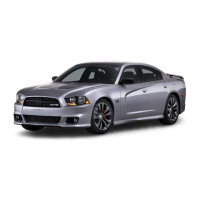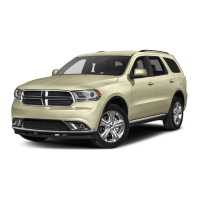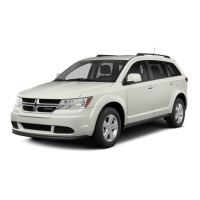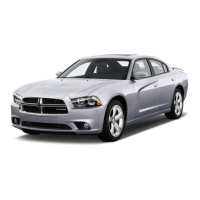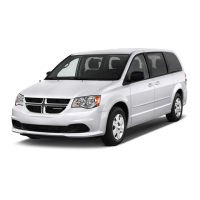
Do you have a question about the Dodge 2014 Avenger and is the answer not in the manual?
| Brand | Dodge |
|---|---|
| Model | 2014 Avenger |
| Category | Automobile |
| Language | English |
Guidance on navigating the owner's manual for desired information.
Important warnings and cautions for safe vehicle operation and to prevent damage.
Location and importance of the Vehicle Identification Number (VIN).
Warning regarding the impact of modifications on vehicle safety and roadworthiness.
Information regarding vehicle keys, key codes, and duplicate key ordering.
Details on the Sentry Key Immobilizer System and its operation.
Explanation of the vehicle security alarm system, its arming, and disarming procedures.
Description of how courtesy and approach lighting operates.
Operation of the Remote Keyless Entry system for locking/unlocking doors and trunk.
Details on manual and power door lock operation and child protection features.
Information on power window operation, including auto-down and anti-pinch features.
Instructions for opening the trunk and safety warnings regarding trunk access.
Overview of vehicle restraint systems including seat belts and airbags.
Details on inside and outside mirrors, including day/night, auto-dimming, and folding features.
Operation and features of the Uconnect Phone system for voice-activated communication.
How to use voice commands to control vehicle features like audio and phone.
Detailed steps for opening and closing the vehicle's hood.
Operation of headlights, parking lights, turn signals, fog lights, and lane change assist.
Details on instrument panel dimming, map/reading lights, and battery saver feature.
Instructions for using wipers, washers, mist feature, and headlights with wipers.
How to adjust the steering column for tilt and telescopic positions.
How to use cruise control for setting, varying, and deactivating speed.
Steps for programming and using the HomeLink system for garage door openers.
Details on operating the sunroof, sunshade, pinch protection, and maintenance.
Details on power outlet locations and their corresponding fuse information.
Information on front and rear cupholders, and optional cigar lighter/ash receiver.
Details on glove compartment, center console storage, and armrest features.
Instructions for folding and securing the rear seatbacks for cargo.
How to operate the rear window defroster and heated mirrors.
Overview of instrument panel components and features.
Detailed explanation of gauges, warning lights, and messages in the instrument cluster.
Information on the mini-trip computer for trip data and temperature display.
Overview of the EVIC display, its features, and system warnings.
Operating the radio, setting clock, using SEEK, INFO, MUSIC TYPE, and SETUP buttons.
Setting radio presets, switching modes (DISC/AUX), and managing pushbutton memory.
Information on supported MP3 file formats, media, and playback.
Using the auxiliary (AUX) jack for audio input from portable devices.
Using steering wheel controls for volume, mode, station seeking, and presets.
Precautions for handling, cleaning, and storing CDs/DVDs to prevent damage.
How to operate manual heating, AC, blower, mode, and recirculation controls.
Using the ATC system for automatic climate control and its operation.
Steps for starting the engine and operating the automatic transmission.
Guidelines for driving on slippery surfaces, through water, and understanding ABS, TCS, and ESC.
Information on tire markings, pressure, loading, and maintenance.
Details on fuel types, additives, and the procedure for adding fuel.
Guidelines for proper vehicle loading, weight distribution, and trailer towing.
Procedures for using hazard flashers and handling engine overheating situations.
Instructions for safely jacking the vehicle and changing a tire.
Procedures for jump-starting the battery and freeing a stuck vehicle.
Guidance on towing procedures for a disabled vehicle using different methods.
Identification of engine components and procedures for checking fluid levels.
Information on the OBD II system, MIL, and emissions inspection requirements.
Recommendations for using genuine parts and utilizing authorized dealer service.
Required maintenance services and component checks for vehicle longevity.
Procedures for checking engine oil level, oil selection, and oil/filter changes.
Guidelines for cleaning and protecting the vehicle's body, paint, wheels, and interior surfaces.
Instructions for replacing exterior and interior light bulbs.
Information on fuse locations, types, and the integrated power module.
Tips for preparing for service appointments and communicating with service advisors.
Details on warranty coverage and the use of genuine MOPAR® parts.
How to report vehicle safety defects to NHTSA and Transport Canada.


